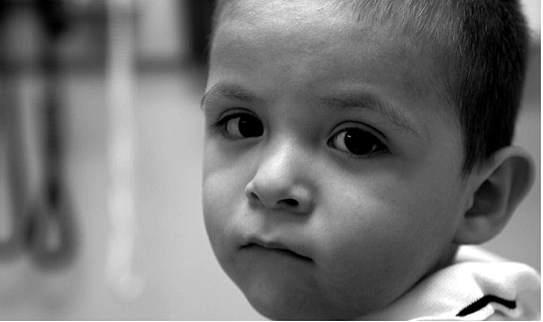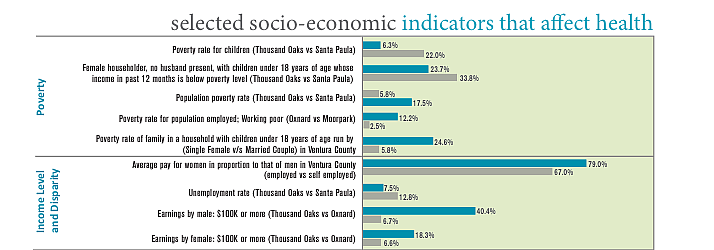A Tale of Two Towns: Can a federal grant make a real change for the poor in Ventura County?

Courtesy of Children's Defense Fund
In Ventura County, which lies just north of Los Angeles in the sprawl of Southern California, great wealth -- in towns such as Thousand Oaks or Ojai -- can be found not far from great desperation, in towns such as Oxnard or Santa Paula.
Read about the projects of other 2014 California Health Journalism Fellows.
Some of the contrasts startle. In Santa Paula, for example, about 14 percent of married couples live in poverty. In Ojai, a comparable in size community less than twenty miles to the north, 0 percent of married couples live in poverty, according to Census Bureau numbers.
Overall the statistics -- from a report backed by the Centers of Disease Control -- show that wealthy Ventura County residents eat better, they have better access to exercise, their lives are less stressful, and they live longer – almost nine years longer on average.
from Transforming Ventura County Communities report
To balance the scales, and give the poor a better chance at health, in 2011 the CDC awarded Ventura County's health care agency (the VCHCA) a new kind of grant. As part of the Affordable Care Act, they gave the county Community Transformation Grant of $481,000 a year for five years, a grant that was matched for the city of Ventura a year later by the Kaiser Foundation.
The idea is to reduce the incidence of chronic diseases, especially diabetes and obesity. That county since has launched a plethora of measures intended to increase the availability of healthy foods and encourage physical activity, as well as farm-to-school programs intended to take advantage of Ventura County’s agricultural strength.
The county's existing "Rethink Your Drink" campaign, which aims to convince schoolchildren to reduce their dependence on sugary beverages, recorded a 37 percent drop in usage over a six-year period, far outstripping the state average of 11 percent, according to a study released in October of 2013.
Other innovative programs – including a community garden in the county’s notoriously dangerous La Colonia neighborhood in Oxnard – appear to be finding success, even in difficult circumstances. But will these measures make a real difference for the poor in the county? Is it possible to “transform” a community with voluntary measures?
Some public health experts – such as Bill McCarthy, at UCLA – support the efforts the county is taking, but doubt they will be enough, especially given the stresses that young single mothers must handle, which research shows can be passed on to children in the form of a tendency towards obesity. Even the county’s health care agency points out that the county has twice the national average of fast food outlets, and that not one city in the county has made any attempt to regulate them. Nor has much effort been made to reach out to residents trapped in islands of “linguistic isolation.”
A long-form story for the county’s weekly newspaper, the Ventura County Reporter, will look at the spectrum of programs backed by the county, along with voluntary efforts by schools, farms, and businesses, and attempt to answer the fundamental question: Can inequality in health be transformed by grants and voluntary efforts?